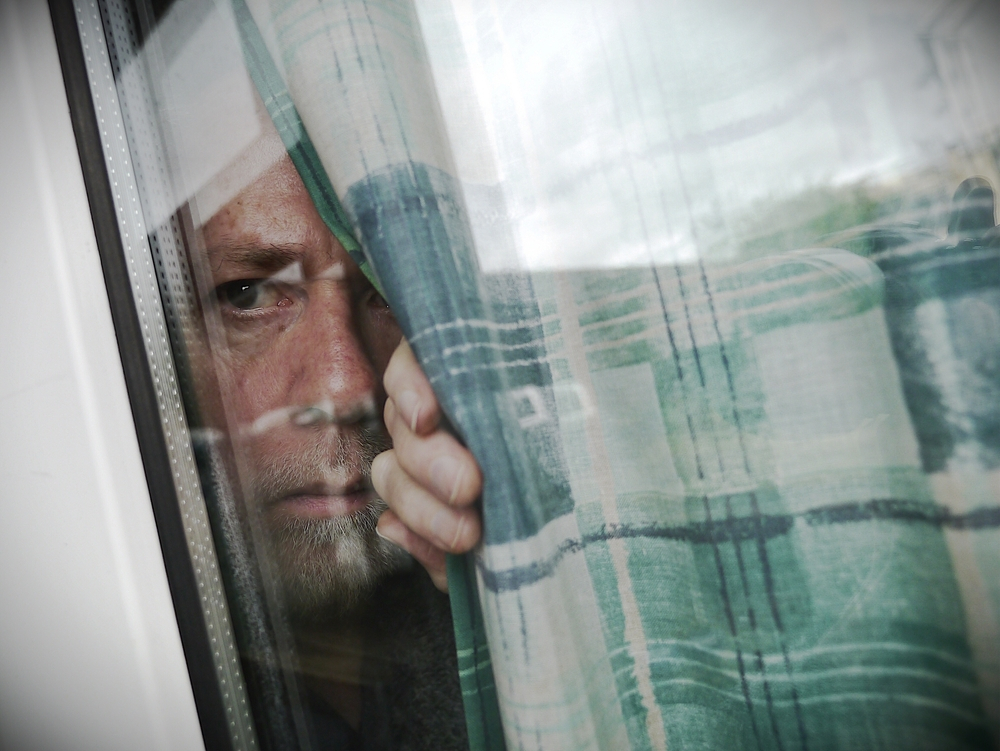
Understanding The Paradoxical Nature Of Agoraphobia
The World Health Organization (WHO) estimates that 264 million individuals globally suffer from anxiety conditions, including agoraphobia.
According to the National Institute of Mental Health (NIMH), 1.7% of American citizens reported experiencing agoraphobia at some point during their lives.
Agoraphobia is a significant mental health concern that’s gripping millions of people around the world. However, more research is being carried out to determine the true prevalence of the condition and to develop effective treatments for those who suffer from it.
What Is Agoraphobia?
Agoraphobia is a type of anxiety disorder that is known to have an intense and irrational fear of being in situations or places where escape and help would be difficult or embarrassing, or where help may not be accessible if needed. People with agoraphobia often avoid crowded public spaces or feel extremely anxious in situations such as open spaces, public transportation, or places that are unfamiliar to them.
For instance, A person with agoraphobia will be terrified to ride on public transportation such as a bus or train. Even the thought of getting on a bus or train may be extremely frightening which may otherwise seem very normal for a healthy individual. This fear may be so overwhelming that the person may avoid traveling on public transportation altogether, or they may only travel during off-peak hours when there are fewer people around.
Over time, the fear of riding on public transportation may become so intense that the person with agoraphobia may start to avoid other situations as well, such as going to any public place or leaving their home altogether. This avoidance can significantly impact their daily life and make it difficult for them to indulge in normal activities such as going to work, school, or social events.
Types Of Agoraphobia
There are majorly two types of Agoraphobia known:
- Specific agoraphobia: In this type of agoraphobia, fear, and avoidance of specific situations or places, such as flying, driving, bridges, tunnels, elevators, or crowds are involved. People with specific agoraphobia are otherwise able to function normally in other situations or places.
- Generalized agoraphobia: This type of agoraphobia involves fear and avoidance of multiple situations or places, such as leaving the house, traveling in a vehicle or public transportation, being in open or enclosed spaces, or being in a crowd. People with generalized agoraphobia may experience more intense symptoms and may find it harder to function in many different situations.
Agoraphobia Symptoms
- Intense fear or anxiety over being in situations where escaping the place might be tough or embarrassing, or where help may not be available if needed.
- Tendency to avoid situations or places that trigger anxiety, such as crowded public spaces, open spaces, public transportation, or places that are new.
- Difficulty or inability to leave one’s home or being alone outside the home.
- Feeling trapped, helpless, or out of control in situations where escape may be challenging.
- Physical symptoms of anxiety, such as a racing heartbeat, sweating, trembling, shortness of breath, chest pain, dizziness, or feeling like you are on the edge or going to die.
- Dependency on a trusted person, such as a family member or friend, to accompany or a source of security reassurance when leaving the home or being in public spaces.
- Depression or other mood disorders.
- Substance abuse or dependence as a way to cope with anxiety.
If you are experiencing symptoms of agoraphobia, it is important to seek help from a mental health expert. Therapy, medication, or a combination of both can effectively treat agoraphobia and help you regain control of your life.
Can Isolation Cause Agoraphobia?
Even though isolation may not be directly the root cause of agoraphobia, it can sometimes cause some people’s symptoms to intensify or grow with time.
People who are socially isolated may become more vulnerable to environmental dangers, which can increase their anxiety and panic. The avoidance of social settings or public spaces that results from this increased worry may eventually accelerate agoraphobia development.
However, prolonged isolation or confinement can exacerbate symptoms of agoraphobia development, as people may grow more apprehensive about leaving their residences or going to strange new places.
It is important to note that not everyone who experiences isolation will develop agoraphobia.
What Causes Agoraphobia?
- Anxiety disorders running in the family can pass on
- Traumatic life experiences, such as being subjected to physical or sexual abuse, or experiencing a serious accident or natural disaster
- History of panic attacks or other anxiety disorders
- Substance abuse or withdrawal from drugs
- Chronic medical conditions, such as heart disease or chronic pain
- Stressful life events, such as divorce, job loss, or financial difficulties
Agoraphobia With Panic Disorder
It is possible for agoraphobia to occur with or without panic disorder. When agoraphobia occurs with panic disorder, the fear and avoidance of specific situations or places are often related to the fear of having a panic attack in such situations. Though, not always agoraphobia is accompanied by panic disorder.
The bodily signs of a panic attack, which can include a racing pulse, sweating, shaking, shortness of breath, chest discomfort, vertigo, or feeling as though you’re going to die, come on suddenly and unexpectedly. People with agoraphobia and panic disorder commonly encounter panic attacks in situations where they fear they may be confined or unable to escape.
Agoraphobia Test
The Agoraphobia diagnosis tool is used by mental health professionals to determine if a person is experiencing symptoms of agoraphobia. These tests are typically administered by a mental health specialist during a clinical evaluation.
One common test used to diagnose agoraphobia is the Agoraphobia Scale. The Agoraphobia Scale is a self-report questionnaire that asks individuals to rate the severity of their symptoms on a scale of 0 to 4. The questionnaire covers a range of symptoms commonly associated with agoraphobia, such as fear of leaving home, fear of being in crowded places, and fear of being in open spaces.
Other tests that may be used to diagnose agoraphobia include structured diagnostic interviews and psychological assessments. These tests are designed to evaluate a person’s overall mental health and identify any underlying conditions that may be contributing to their symptoms.
Online self-tests or quizzes should not be used as a definitive diagnosis of agoraphobia. Only a qualified mental health professional can make an accurate diagnosis based on a thorough evaluation of a person’s symptoms and medical history.
If you believe that you may be experiencing symptoms of agoraphobia, it is important to seek help from a mental health professional. With proper diagnosis and treatment, you can learn to handle your symptoms and improve your quality of life.
Agoraphobia Treatment
- Therapy: Cognitive-behavioral therapy (CBT) is a common form of therapy used to treat agoraphobia. CBT helps people to recognize and challenge negative thoughts and beliefs that fuel their fears. Exposure therapy, a type of CBT, involves gradually exposing individuals to situations that trigger their anxiety in a controlled and supportive environment.
- Medication: Antidepressants, such as selective serotonin reuptake inhibitors (SSRIs), are commonly used to treat agoraphobia. These medications can help to reduce anxiety and depression symptoms.
- Lifestyle Changes: Lifestyle changes, such as regular exercise, a healthy diet, and stress management techniques, can also help to manage symptoms of agoraphobia. Eliminating caffeine, alcohol, and nicotine can also help to reduce anxiety symptoms.
Agoraphobia can vary in severity and symptoms from one person to another, and it can be effectively treated with therapy and medication. If you or your dear one is experiencing symptoms of agoraphobia, it is important to seek help from a mental health professional.
It is crucial to keep in mind that seeking help for agoraphobia is not a sign of weakness, and treatment is available to help you overcome your fears and live a fulfilling life. Don’t hesitate to reach out to a mental health professional nearby if you are experiencing symptoms of agoraphobia. It can be tackled under medical supervision for a happy future we all long for.








